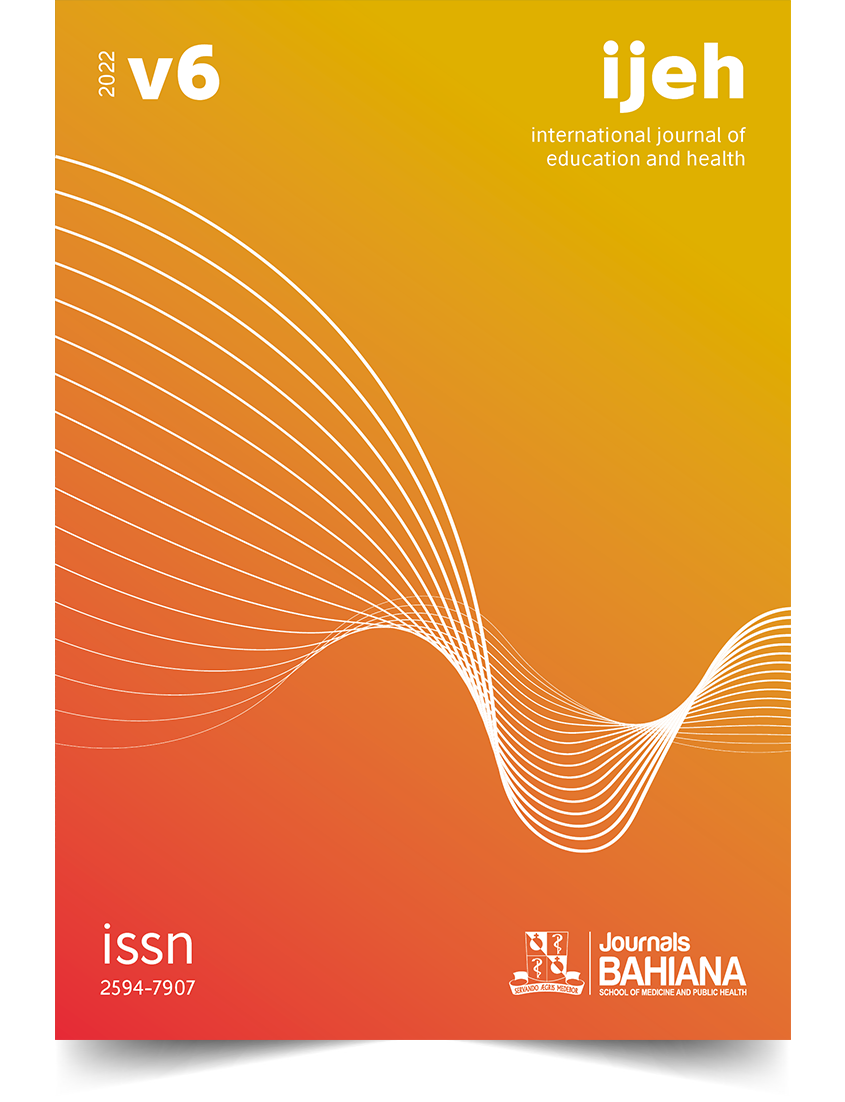Rethinking patient’s chief complaint, research contributions developed by medical students to person-centered care
DOI:
https://doi.org/10.17267/2594-7907ijeh.2022.e4407Keywords:
Medical education, Education, Premedical, Medical anthropology, Patient-Centered CareAbstract
INTRODUCTION: Traditionally, anamnesis, or medical interviews, have been the main tools in diagnosing health issues and indicating therapeutic intervention. Medical interviews perform clinical methods and hence medical theory. OBJECTIVE: In this paper, we will present a learning experience process gained during an introductory course on research. METHODOLOGY: Based on a clinical report designed for the purposes of investigation, a group of students and an advisor analyzed the role of the chief complaint in providing healthcare. RESULTS: Students noticed the case did not express the chief complaint of the patient. In addition, there was difficulty in articulating social and biological data in the report. Such findings were discussed by the group considering the literature on medical interviews and the medical anthropology framework in order to broaden their understanding of subjective and sociocultural aspects of illness. CONCLUSION: Group discussions about the case and the literature made it possible to expand the students' understanding. We argue that taking into account the main complaints can reveal a complex range of sociocultural meanings and webs relevant to understanding the health concepts and practices of patients and their microsocial groups. In doing so, we hope to contribute to the debates around medical education and the appreciation of sociocultural aspects in health practices. And, thus, enrich the caregiver-patient relationship towards person-centered care.
Downloads
References
(1) Stewart M, Brown JB, Weston WW, McWhinney IR, McWilliam CL, Freeman TR. Medicina Centrada na Pessoa - transformando o método clínico. 3a. ed. Porto Alegre: Artmed; 2017.
(2) Wenceslau LD, Fonseca VKT, Dutra LA, Caldeira LG. A patient-centered clinical interview script for medical undergraduate teaching. Rev Bras Med Fam Comunidade. 2020;15(42):2154. https://doi.org/10.5712/rbmfc15(42)2154
(3) Proença MA, Rosa AR, Cruvinel A, Müller MR. Sensitivy in medicine - a path from examination to listening, through the hand of narrative medicine. Diversitates. 2021;13(3):101-120. https://doi.org/10.53357/EQFA1825
(4) Borrell-Carrió F, Suchman AL, Epstein RM. The biopsychosocial model 25 years later: principles, practice, and scientific inquiry. Ann Fam Med. 2004;2(6):576-582. https://doi.org/10.1370/afm.245
(5) Kaplan-Myrth, N. Interpreting people as they interpret themselves: Narrative in medical anthropology and family medicine. Can Fam Physician. 2007;53(8):1268-1269. Cited: PMID: 17872832
(6) Midão CMV, Ruiz-Moreno L. Teaching the Medical Semiology at medical schools in the State of Rio de Janeiro. Rev. bras. educ. med. 2010;34(3):397-405. https://doi.org/10.1590/S0100-55022010000300009
(7) Ellery AEL, Bosi MLM, Loiola FA. Integration research, education and health services: background, strategies and initiatives. Saúde Soc. 2013;22(1):187-198. https://doi.org/10.1590/S0104-12902013000100017
(8) Bickley LS. Bates - Propedêutica Médica. 12a. ed. Rio de Janeiro: Guanabara Koogan; 2018.
(9) Porto CC, Porto AL. Exame Clínico. 8a. ed. Rio de Janeiro: Guanabara Koogan; 2017.
(10) Menéndez EL. Sujeitos, saberes e estruturas: uma introdução ao enfoque relacional no estudo da saúde coletiva. 1a. ed. São Paulo: Hucitec; 2009.
(11) Williams B. Case based learning - a review of the literature: is there scope for this educational paradigm in prehospital education? Emerg Med J. 2005;22(8):577-581. https://doi.org/10.1136%2Femj.2004.022707
(12) Kaur R, Kumar R, Sharma V. Case based learning as an innovative teaching tool. International Journal of Basic & Clinical Pharmacology. 2014;3(2):395-398, 2014. https://doi.org/10.5455/2319-2003.ijbcp20140428
(13) Nunes MO. From application to implication in medical anthropology: political, historical and narrative interpretations of the world of sickness and health. Hist. cienc. saude-Manguinhos. 2014;21(2):403-420. https://doi.org/10.1590/S0104-59702014000200003
(14) Kirmayer LJ, Rousseau C, Guzder J. Introduction: the place of culture in mental health services. In: Kirmayer LJ, Guzder J, Rousseau C. Cultural Consultation. New York: Springer; 2014. p. 1-20.
(15) Langdon EJ. The dialogues between anthropology and health: contributuions to public policies. Ciênc. Saude Colet. 2014;19(4):1019-1029. https://doi.org/10.1590/1413-81232014194.22302013
Downloads
Published
Issue
Section
License
Copyright (c) 2022 Manuela Rodrigues Müller, Mariana Sawchuk Moura Marques Antunes, Pedro Puccioni de Oliveira Lyra, Julia Pinho de Mattos, Deisianny dos Santos Ferreira, Luiza Brandão Catharina, Julia da Matta Xavier Pinheiro Machado, Manuela Wendling Russo Lourenço , Luísa Leite Vaz da Silva, Victor Hugo Paixão Ximenes

This work is licensed under a Creative Commons Attribution 4.0 International License.
This work is licensed under a Creative Commons Attribution 4.0 International License.



